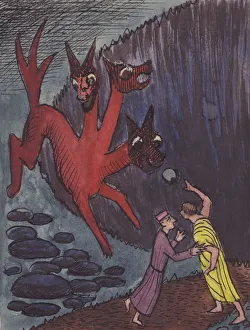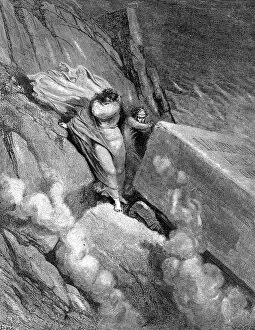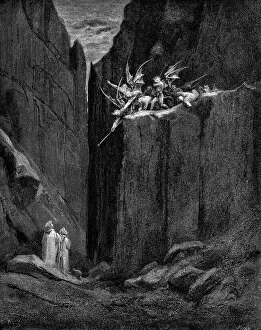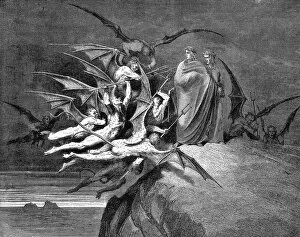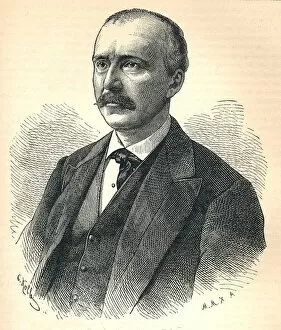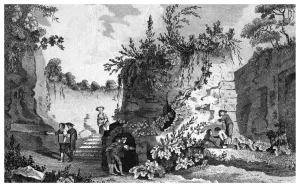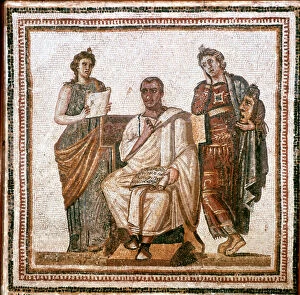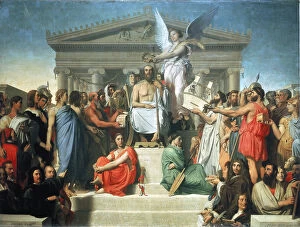Publius Vergillus Maro Collection
"Publius Vergilius Maro: Exploring the Depths of Artistic Interpretation" In the realm of art
All Professionally Made to Order for Quick Shipping
"Publius Vergilius Maro: Exploring the Depths of Artistic Interpretation" In the realm of art, few figures have captivated the imagination quite like Publius Vergilius Maro, better known as Virgil. From Dante's epic poem to stunning visual representations by renowned artists such as Shirley Markham, William-Adolphe Bouguereau, and Gustave Dore, Virgil's presence is felt throughout history. One cannot help but be enthralled by the iconic image of Dante and Virgil standing before a three-headed monster in Shirley Markham's masterpiece from 1951. The intensity in their eyes reflects their determination to conquer any obstacle that stands in their way. Similarly, Bouguereau's 1850 portrayal of Dante and Virgil in Hell transports us into the depths of despair. Their expressions convey both empathy for those suffering around them and an unwavering resolve to navigate through this infernal landscape. Gustave Dore further immerses us into Dante's Inferno with his haunting illustrations from 1863. As we stand at the edge of an abyss emitting a foul stench, we can almost taste the putrid air ourselves. Yet amidst this darkness, there is solace knowing that Virgil will shield Dante from harm when confronted by menacing demons. The artistic journey continues with Thornton's depiction of Mercury sent by Jupiter during the late 18th-early 19th century. This celestial intervention adds another layer to our understanding of Virgil's role as a guide and protector on Dante's perilous voyage. Walter brings forth Menalcas, Damoetas, and Palaemon from ancient times in his work from 1849. These characters serve as reminders that even within classical literature itself lies inspiration for future generations seeking enlightenment through artistry. Shirley Markham once again captures our attention with her portrayal of Dante and Virgil facing a colossal giant in 1951.

